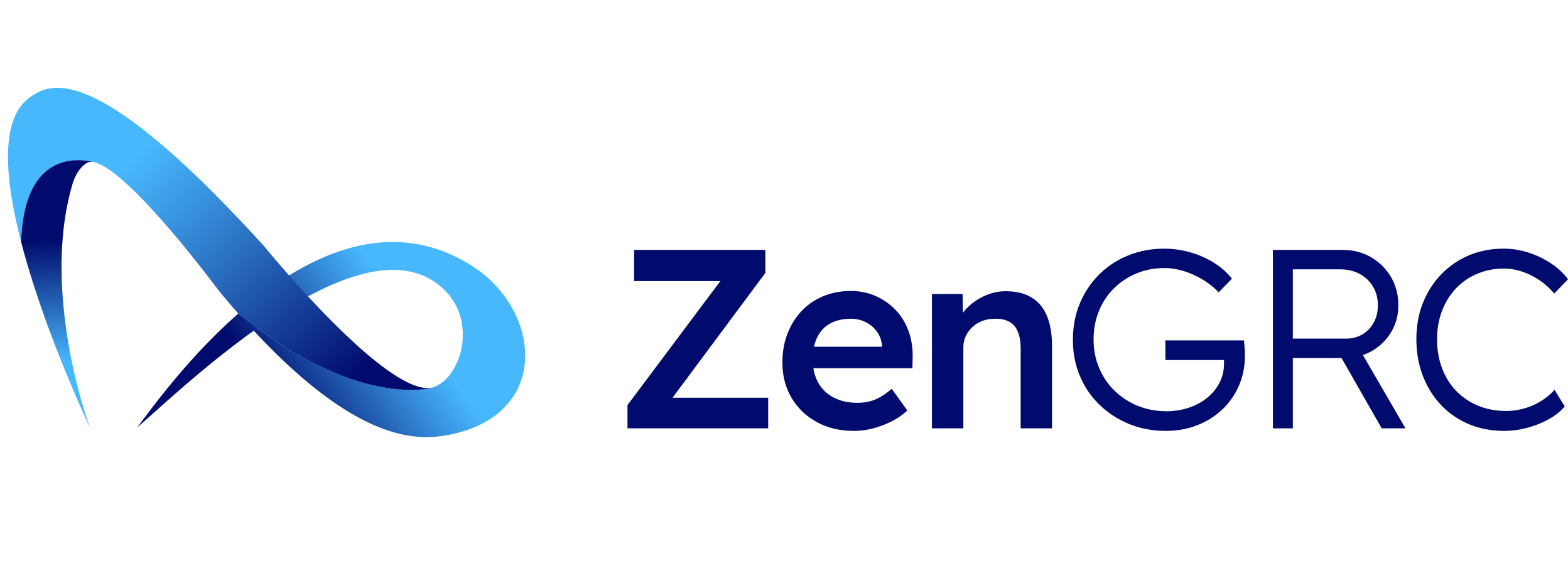Healthcare third-party risk management protects patient data and organizational integrity by systematically identifying, assessing, and mitigating risks across digital vendor networks while maintaining HIPAA compliance and patient trust. Schedule a demo to see how ZenGRC can strengthen your healthcare vendor risk management program.

Managing Third-Party Risk in Healthcare Supply Chains
Key Takeaway
Healthcare third-party risk management protects patient data and organizational integrity by systematically identifying, assessing, and mitigating risks across digital vendor networks while maintaining HIPAA compliance and patient trust.
Table of Contents
- Healthcare Data Sensitivity
- Regulatory Framework
- Costs of Inadequate Management
- Technology Solutions
- Implementation Best Practices
- Frequently Asked Questions
Key Terms
Protected Health Information (PHI): Individually identifiable health information held or transmitted by covered entities and business associates in any form.
Third-Party Risk Management (TPRM): The systematic process of identifying, assessing, and mitigating risks posed by external vendors and service providers.
Business Associate Agreement (BAA): A contract between a covered entity and business associate that establishes safeguards for PHI protection.
HIPAA Security Rule: Federal regulation requiring physical, administrative, and technical safeguards to protect electronic PHI (ePHI).
Vendor Risk Assessment: Systematic evaluation of third-party security controls, compliance status, and potential risks to organizational data.
Introduction
Healthcare third-party risk extends beyond operational concerns—it directly impacts patient trust and data security. Manual vendor management creates critical vulnerabilities through fragmented documentation and inconsistent security assessments.
The healthcare supply chain of 2025 represents a complex digital ecosystem. Modern healthcare organizations rely on intricate vendor networks providing cloud-based electronic health record systems, IoT-enabled medical devices, remote monitoring platforms, and AI-powered diagnostic tools.
Expert Insight: Healthcare organizations using automated third-party risk management reduce PHI breach incidents by up to 60% compared to those relying on manual vendor oversight processes.
Digital transformation has revolutionized healthcare delivery while creating new challenges for GRC professionals. Every vendor potentially represents another access point to sensitive patient data, requiring careful security monitoring and compliance verification.
What Makes Healthcare Data So Sensitive?
Healthcare organizations manage the most sensitive personal information entrusted to any industry. Protected Health Information encompasses comprehensive digital footprints of individual health journeys.
Third-party vendors may access multiple data categories including patient medical histories detailing diagnoses, treatments, and medications. This information could enable discrimination or manipulation if compromised.
Critical PHI Categories Requiring Protection:
- Financial and insurance records containing social security numbers and payment details
- Real-time health monitoring data from connected medical devices showing vital signs
- Genetic testing results and family medical histories affecting patients and relatives
- Mental health records and substance abuse treatment information
- Prescription and medication adherence patterns from digital health platforms
Unlike credit card numbers that can be changed or passwords that can be reset, medical histories remain permanent and unchangeable. PHI breaches create lifelong consequences from medical identity theft to personal discrimination.
Protecting patient data maintains the fundamental trust essential to patient-provider relationships. When third-party vendors access PHI, this trust extends to them, making robust vendor risk management both a regulatory requirement and ethical imperative.
What Are the Regulatory Framework Requirements?
HIPAA remains the cornerstone of healthcare data protection compliance requirements. Business associates, including third-party vendors with PHI access, must comply with specific security standards.
Current HIPAA Requirements for Third-Party Vendors:
- Mandatory encryption of PHI at rest and in transit
- Multi-factor authentication implementation
- Proper network segmentation protocols
- Regular security assessments and vulnerability scanning
- Annual penetration testing requirements
Healthcare organizations must ensure vendors maintain comprehensive security measures and demonstrate ongoing compliance. This includes written verification of technical safeguards through subject matter expert analysis and formal certification.
Healthcare organizations remain ultimately responsible for vendor PHI handling. Consequences extend beyond regulatory fines, making vendor risk management a critical compliance strategy component.
What Are the Costs of Inadequate Third-Party Risk Management?
Inadequate third-party risk management creates cascading impacts across multiple organizational dimensions:
How Do Financial Impacts Affect Healthcare Organizations?
Organizations face substantial regulatory penalties for compliance failures. Costs multiply through breach investigations, patient notification requirements, credit monitoring services, cybersecurity improvements, and increased insurance premiums.
Legal expenses from patient lawsuits and class-action litigation persist for years following incidents. Lost revenue from disrupted operations compounds financial impacts significantly.
What Operational Disruptions Result from Security Incidents?
Security incidents force critical systems offline, disrupting patient scheduling and electronic prescribing. Staff revert to manual processes, reducing efficiency and potentially delaying patient care.
Ripple effects impact lab result processing, medical imaging systems, and insurance claim submissions. Recovery requires significant IT resources, diverting them from strategic initiatives.
How Does Reputational Damage Impact Healthcare Organizations?
Lost patient trust creates irreparable damage with immediate impacts on patient retention and referral patterns. Long-term effects include damaged community relationships, decreased staff morale, and recruitment challenges.
Organizations experience strained relationships with research partners and donors, affecting future growth opportunities and collaborative initiatives.
How Can Technology Improve Healthcare Third-Party Risk Management?
Manual processes and spreadsheets cannot handle modern healthcare third-party relationship complexity. Effective TPRM requires sophisticated technology solutions that automate, streamline, and strengthen vendor management processes.
What Technology Requirements Should Healthcare Organizations Consider?
Robust TPRM platforms serve as centralized hubs for all vendor-related activities. Core capabilities include automated assessment workflows, real-time risk monitoring, and comprehensive document management systems.
Platforms should enable customizable assessment criteria based on vendor risk levels and PHI access types while maintaining detailed audit trails of vendor interactions.
How Does Automated Vendor Assessment Work?
Technology solutions streamline vendor assessment through automated questionnaire distribution and response collection. Organizations establish different assessment templates based on vendor criticality and data access levels.
This systematic approach ensures consistent evaluation across vendors while reducing administrative burden on GRC teams and improving assessment accuracy.
What Are the Best Practices for Implementation?
Step 1: Establish Risk Classification Criteria
Define clear vendor risk categories based on PHI access levels, system criticality, and regulatory requirements for systematic assessment approaches.
Step 2: Develop Standardized Assessment Processes
Create consistent vendor onboarding and ongoing monitoring procedures with automated workflows for regular reviews and documentation updates.
Step 3: Implement Continuous Monitoring Systems
Deploy real-time visibility solutions for vendor compliance status, security certifications, and emerging risks requiring immediate attention.
Step 4: Maintain Comprehensive Documentation
Establish centralized repositories for vendor contracts, security assessments, compliance certifications, and incident reports with version control.
How Should Organizations Approach Continuous Monitoring?
Effective vendor risk management requires robust monitoring capabilities to track vendor risk profile changes. Organizations need real-time visibility into vendor compliance status and emerging issues impacting patient data security.
Automated alerts ensure stakeholders receive immediate notification about vendors requiring reassessment or critical documents approaching expiration, enabling proactive risk management strategies.
What Documentation Management Practices Are Essential?
Maintaining comprehensive vendor documentation proves crucial for operational efficiency and regulatory compliance. TPRM solutions should provide centralized repositories for vendor contracts, security assessments, and incident reports.
Systems should track document versions, maintain audit trails, and facilitate easy access during regulatory audits while ensuring data security and access controls.
Frequently Asked Questions
Q: What is the difference between HIPAA compliance and vendor risk management in healthcare?
A: HIPAA compliance focuses on regulatory requirements for PHI protection, while vendor risk management encompasses broader risk assessment, monitoring, and mitigation strategies for all third-party relationships affecting patient data security.
Q: How often should healthcare organizations assess third-party vendor risks?
A: Healthcare organizations should conduct comprehensive vendor risk assessments annually, with quarterly reviews for high-risk vendors and continuous monitoring for vendors with direct PHI access or critical system integrations.
Q: What are the most critical risks healthcare organizations face from third-party vendors?
A: Critical risks include PHI data breaches, system vulnerabilities in connected medical devices, ransomware attacks through vendor networks, compliance violations, and operational disruptions affecting patient care delivery.
Q: How can small healthcare practices implement effective vendor risk management?
A: Small practices should start with vendor inventories, establish basic security questionnaires, require business associate agreements, and gradually implement automated TPRM solutions as they grow their vendor networks.
Q: What key metrics should healthcare organizations track for vendor risk management?
A: Essential metrics include vendor compliance scores, security incident response times, PHI access audit completion rates, business associate agreement currency, and vendor security assessment completion percentages.
Q: How do business associate agreements relate to third-party risk management?
A: Business associate agreements (BAAs) establish legal frameworks for PHI protection requirements, while third-party risk management provides ongoing monitoring and verification that vendors actually implement and maintain those agreed-upon safeguards.
About ZenGRC
ZenGRC transforms third-party risk management from a potential vulnerability into a strategic advantage through integrated, holistic risk management. The centralized platform eliminates information silos, providing instant access to vendor information, risk assessments, and compliance status through automated evidence collection and customizable security questionnaires.
As vendor networks grow, ZenGRC scales with organizations, streamlining compliance processes and maintaining continuous oversight without creating additional work for teams.
This document provides comprehensive guidance on managing third-party risk in healthcare supply chains, focusing on protecting patient data and maintaining regulatory compliance.
